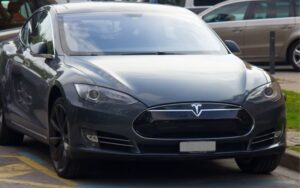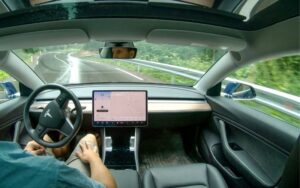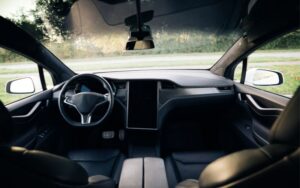Tesla Model 3 Creaking Noise: All You Need To Know
Last updated on April 18th, 2023 at 11:17 pm
Tesla is well known for producing electric cars with different variants. The company has shown that electric cars can be appealing thanks to their excellent performance and cutting-edge interiors.
And the practical driving range and the Model 3 are no exception. Despite this technological advancement, the Model 3 still has faults that have left its users complaining.
A major complaint is a creaking noise that comes from the vehicle. Here, you’ll find out what this means.
The creaking noise in the Tesla Model 3 can be due to several reasons. First, there have been complaints from some users that the creaking noise occurs from the driver’s door area near the armrest, and most complain that the noise comes from the steering wheel.
In this article, I’ll walk you through everything you need to know about the creaking sound in your Model 3 Tesla and how to fix it.
Why Does My Model 3 Tesla Make a Creaking Sound?

There are different reasons your Tesla Model 3 is making a creaking noise.
First, a creaking sound can come from the driver’s door whenever you rest your hand on it.
The cause of the sound is a plastic component attached to the door card that scrapes against the paintwork of the door.
Another reason for a creaking sound in your Tesla can be from the driver’s or passenger’s window.
The metal frame can touch and scratch against the glass when you roll the window up and down.
When this happens, it will cause a creaking noise in the process. There are several possible causes for creaking car windows.
For example, dirt or any particle may be in the window track, or the window control might need a replacement.
If a chunk of dirt or debris is in the window track, it can prevent the window from sliding up and down, leading to a creaking sound.
A creaking sound can also come from the upper control arm ball joints. In older Model 3 cars, the upper control arm ball joints often start to make a loud squeaking noise after some months.
The ball joint makes it possible for the steering knuckle to swivel and allows the wheels to spin while the car is moving while yet staying connected to it.
Many automobiles have upper and lower control arms that link to the steering knuckle points for each front wheel.
Although no safety issue is associated with the problem, the noise is loud and inconvenient and only worsened by how silent Tesla cars are.
Why Is There a Creaking Sound From Underneath My Tesla Model 3?
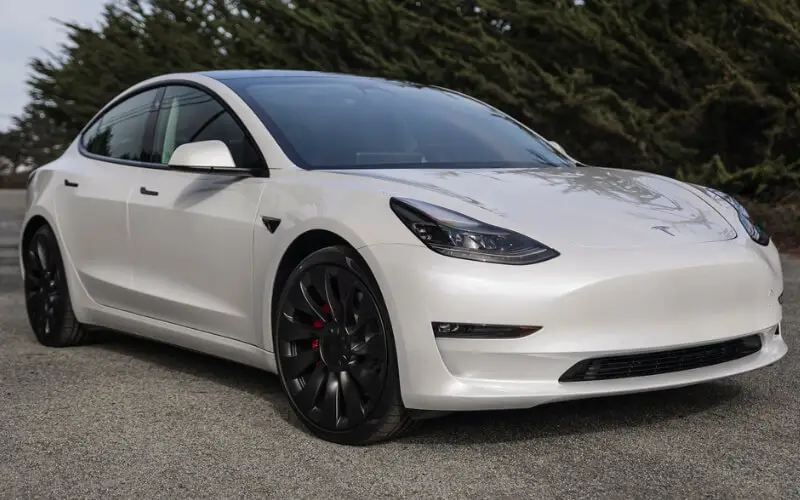
The most frequent creaks from underneath your Tesla Model 3 will be related to your car’s suspension.
However, it may be a simple and inexpensive fix if lubrication is the primary source of squeaking.
Instead of air suspensions, the Tesla Model 3 uses coil springs to smooth the ride and absorb bumps.
The springs of the Tesla Model 3 allow it to sit slightly lower than typical factory-built automobiles, giving it a sportier appearance.
If you hear a creaking sound from underneath your Tesla model 3, it is best to fix an appointment with Tesla and have them check it out and resolve the issue.
What Causes a Creaking Sound From My Model 3 Steering While Driving at Low Speed?
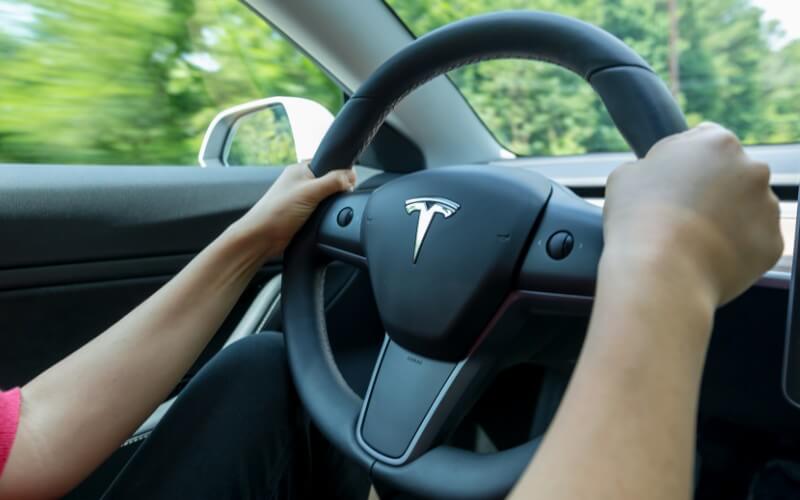
A creaking sound from your Model 3 steering could result from a faulty upper control arm.
One essential component of your car is the steering wheel. It might be simple to repair a creaking steering wheel, but it could also indicate a more severe problem.
When you take your Tesla to a mechanic or you schedule an appointment with Tesla for repairs, they will carry out a steering wheel examination to find out the problem.
The repairer will check several components, including your shocks, ball joints, tie rods, power steering system, etc., to determine the source of your creaking steering wheel.
The following are typical problems that lead to creaking steering wheels:
#1. Faulty Power Steering Rack
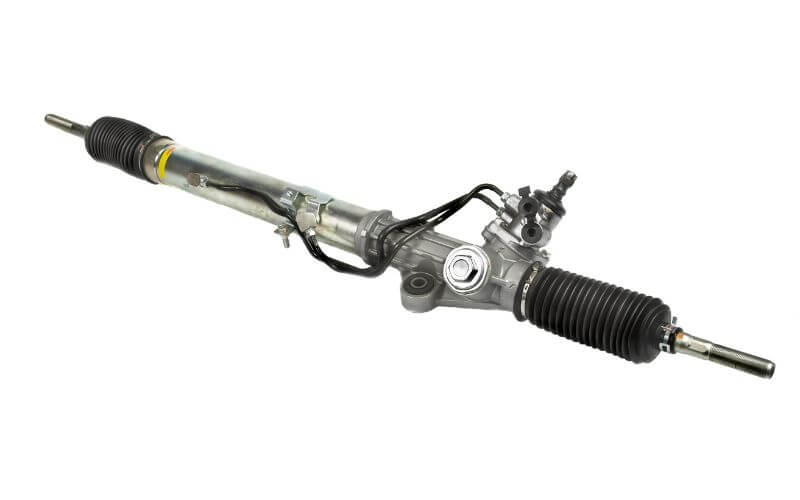
Problems with the power steering rack or belt frequently result in a creaking sound while driving at low speed and during slow turns.
#2. Ball Joints
The steering wheel creaking when you’re moving slowly or your car veering to the right or left when you hit a bump could be a symptom of worn ball joints.
The creaking sounds could start weak; they will eventually grow louder and occur more frequently.
#3. Worn Suspension Bush
When you hear creaking noises while pressing the break or accelerating, it’s a sign that the suspension bush is not functioning correctly and needs a replacement.
#4. Worn Tie Rods
The tie rod is a vital steering wheel component. Damaged tie rods may squeak, especially when driving at low speed.
When you notice a creaking sound from the steering while driving at low speed, the main things to check are the upper control arm or power steering.
Worn suspension joints also affect the steering and may be to blame if you hear creaking and clunking noises.
The joints are likely to deteriorate with time because they bear the vehicle’s weight and are subject to the impact of uneven roads.
Why Does My Steering Creak While Turning in Park Mode?
Frequently, you may find it challenging to turn the wheels or hear noises when rotating the steering wheel while turning in park mode.
Usually, worn-out or damaged suspension joints are the source of those noises. However, your engine or steering system may also be the reason for the noise.
Below are some of the causes of the creaking sound.
#1. Low-Power Steering Fluid
The power steering system uses a pump to allow fluid to circulate and provide smooth steering.
Low fluid levels can cause air to move through the steering system, making odd noises when you turn the steering.
#2. Leaking Fluids
Another source of creaking sounds when driving your car is when fluid in the steering pump is leaking.
The creaking you hear when turning the steering wheel while your car is stationary will depend on how much power steering fluid is leaking.
#3. Faulty Suspension
Steering can be exceedingly challenging when your car’s suspension isn’t working correctly.
As a result, bad struts and poor suspension put stress on the steering system, potentially harming its mechanics.
How Do You Stop Your Model 3 Tesla From Making a Creaking Sound?
Stopping the creaking noises in your Tesla Model 3 depends on what is causing the noise.
So identifying the source of the problem is the first step to stopping the sound.
Most of the time, creaking noises from the window usually have simple and easy solutions. So here’s what to do when the noise is from the window.
#1. Check the Window Track
Dust and other contaminants in the tracks will increase friction and amplify the creaking noise.
To get rid of the dirt, get a clean piece of cloth and spray WD40 or alcohol on it. Then, use the cloth to clean the window tracks.
#2. Lubrication
Sometimes, the tracks where the window moves in and out can become dry and lead to creaking noises. To prevent or repair this, you can use a lubricant.
When there’s a need to lubricate the window tracks, it is necessary to use the right product. You should not use any oily or petroleum-based lubricants.
Such products will only attract more dirt, and the issue will worsen as it gathers dirt and grit over time.
In addition, the car window will become noisier and move more slowly due to the buildup.
Secondly, these lubricants can aggravate damage by drying out the rubber on the window track surfaces over time.
#3. Check the Window Regulator
A loose window regulator can also cause creaking noises. To fix this, all you have to do is tighten the window regulator.
If you need help with how to do it, you can visit a car repairer or schedule an appointment with Tesla.
#4. Replace Window Seal
The car window may creak if the window seal is old, worn out, or damaged. To resolve this problem, you must replace the seal.
If the creaking sound from your Tesla is from the driver’s door, all you have to do is get a lubricant or silicone spray and use it on the door.
The hard plastic edge generates a creaking sound as it slides along the door frame.
Therefore, spray the edge thoroughly where the painted door frame meets the edge of the door card.
Use any piece of cloth to remove excess spray and leave it to dry. Most times, the noise could also be because of faulty control arm ball joints.
As soon as you start noticing and hearing abnormal sounds, it is best to attend to them immediately to avoid serious issues.
Here is a table of why you should attend to any noise on time.
| Reasons | How It Helps You |
|---|---|
| Cost | You could save by simply providing your Tesla with the necessary maintenance. |
| Safety | Ball Joints are a crucial component of a car’s steering suspension and help control the vehicle. |
| Retain the Car’s Value | Your car value decreases over time, but you can slow down that decline by fixing any minor creaking. |
| Reliability | When you attend to your car, you won’t have to bother about faults developing while driving. |
If you notice noises when driving your Tesla, it is best to check it out as soon as possible to be safe.
A simple maintenance task, such as lubricating your suspension system, may be all that is needed to stop a creaking sound.
However, it can be a sign of deeper problems that could pose a safety risk or necessitate more costly repairs in the future.

Hey, I’m Michael Davis, a 35-year-old with a degree and a love for cars and tech. Since I was a kid, cars have been my thing—so much that I even thought they ran on magic beans! Fast forward, and I’ve built Vehicle Army, your one-stop-shop for easy-to-understand car facts.

